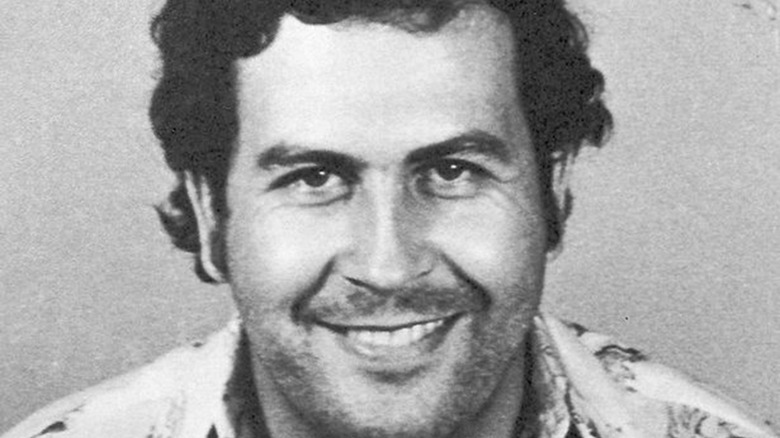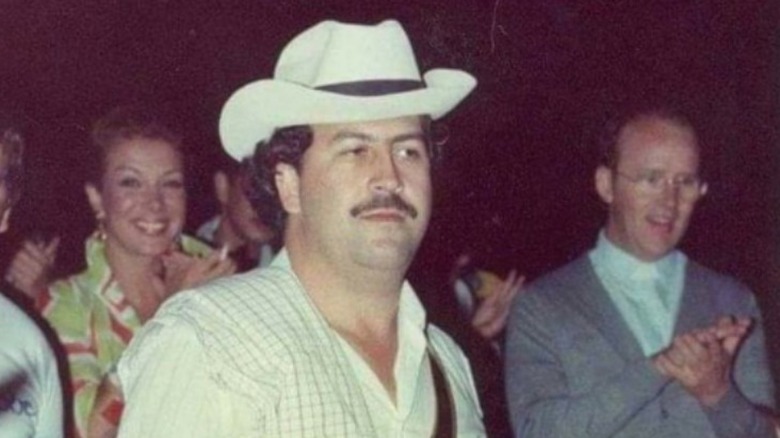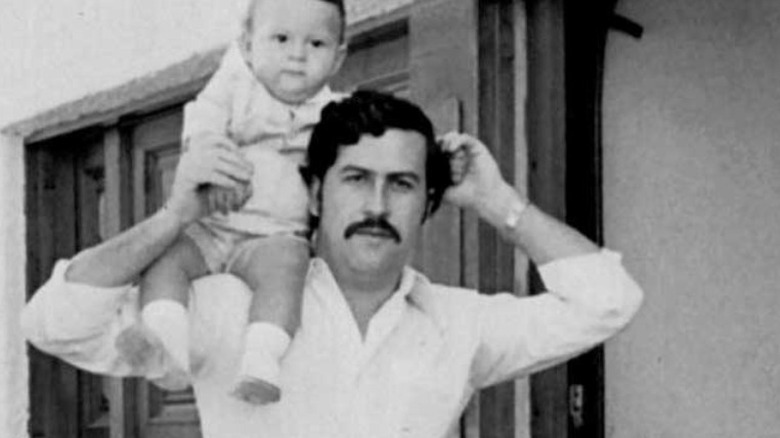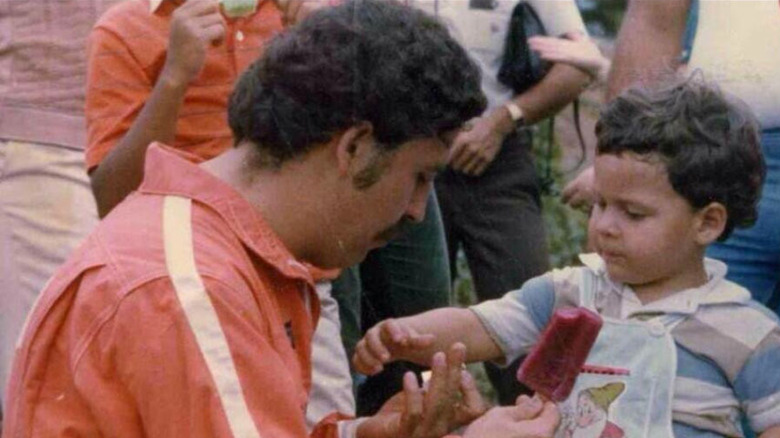A Look At Pablo Escobar's Luxury Prison
Pablo Escobar remains a polarizing figure. On one hand, he was a sort of Robin Hood of Colombia who supported the poor "by sponsoring charity projects and soccer clubs" (via Biography), and his story has made intriguing material for Hollywood projects. On the other hand, he was a crime lord who trafficked narcotics, kidnapped people, and caused thousands of deaths.
After being targeted by the Colombian and United States governments, Escobar surrendered in 1991 and agreed to five years in jail. But, in true Escobar fashion, he orchestrated his jail time on his own terms by building ritzy suites overlooking Medellín, hand-picking people to run the facility, and remaining the kingpin of his cocaine dynasty while there. He called the prison "La Catedral."
According to the New York Post, when the Colombian government tried to move Escobar to a more standard jail in 1992, he escaped. Following the escape, Drug Enforcement Administration officials Steve Murphy and Javier F. Peña hunted him for over a year. In the process, they learned a lot about the drug lord while searching his former jail suites in Medellín, which they went on to write about in a 2019 book, "Manhunters: How We Took Down Pablo Escobar."
La Catedral was more like a fancy hotel than a jail cell
In "Manhunters: How We Took Down Pablo Escobar" (via New York Post), DEA agent Javier F. Peña described La Catedral as "a country club filled with luxury items, such as state-of-the-art televisions, refrigerators, and stereo equipment."
The New York Post reports that Peña even tried sleeping in Pablo Escobar's former bed one night. "It was comfortable," Peña recalled, "large and custom-made, with a base of concrete and two firm mattresses stacked on top of each other."
Despite Escobar's own comfy quarters, which Peña deemed "the lion's lair," the drug lord roamed the place freely. "Escobar never slept in the same place for more than two consecutive nights," Peña recalled. "He used the nearby cottages for parties and alternated sleeping in each of them. They were all beautifully appointed, with planters, hanging baskets and luxurious upholstery and drapes. One of them had a bathroom built like a bunker, with reinforced cement walls that must have been more than 3 feet thick."
Pablo Escobar was reportedly a neat freak... who loved pigeons
Despite the presumably messy nature of being an international drug lord, DEA agents Steve Murphy and Javier F. Peña described Pablo Escobar's bedroom and office as "surprisingly neat" in "Manhunters: How We Took Down Pablo Escobar" (via the New York Post).
"Escobar had a thing about clean and well-proportioned bathrooms," Peña wrote, "and each time we raided a safe house that Escobar used, we always found a curiously sparkling bathroom with brand-new fixtures."
Escobar's taste for the finer things was also apparent in the stacks of books found in La Catedral. "There were also stacks of self-published hardcover books signed by Escobar and his sicarios (hit men)," Peña recalled. "The leather-bound volumes, featuring satirical cartoons making fun of the United States, were each signed by Escobar and encased in gift boxes, which were also made of the finest, supple leather."
Several of these volumes focused on an unexpected topic: pigeons. "We found volumes on how to take care of homing pigeons," Peña added. "Several pigeon coops were located throughout the prison, including outside of Escobar's cell. The pigeons were used to deliver messages to various Escobar associates and members of the cartel."
Pablo Escobar's office was full of 'methodically organized' memorabilia
The photos for Pablo Escobar's post-escape wanted posters came from an unlikely place: his own trash can. DEA agents Steve Murphy and Javier F. Peña found a film canister in the garbage in the drug lord's office at La Catedral and used the developed images to advance their search.
According to "Manhunters: How We Took Down Pablo Escobar" (via the New York Post), even Escobar's hate mail was filed in his signature meticulous fashion. "In Escobar's correspondence files, which were surprisingly neat and methodically organized, he kept all the threatening notes from his enemies," Peña wrote, adding that the drug lord had "every wanted poster that had ever been issued against him in Colombia and just about every article that had appeared about him."
Escobar's "correspondence files" also notably included letters from mothers who were "offering up their daughters for sex with the drug lord."
Despite all of this, perhaps the most surprising item in La Catedral was what Escobar kept across from his bed: "a ceramic Virgin Mary clutching a baby Jesus in her arms."



